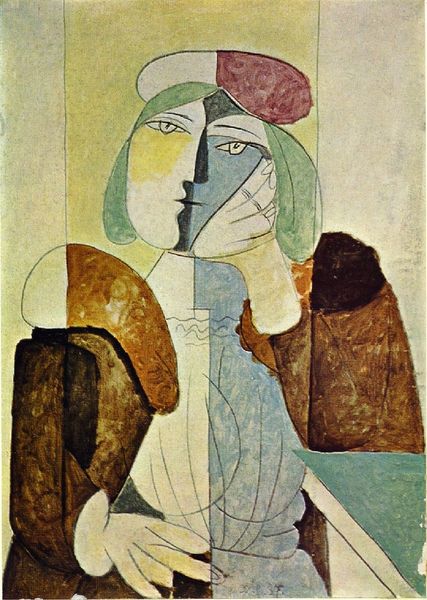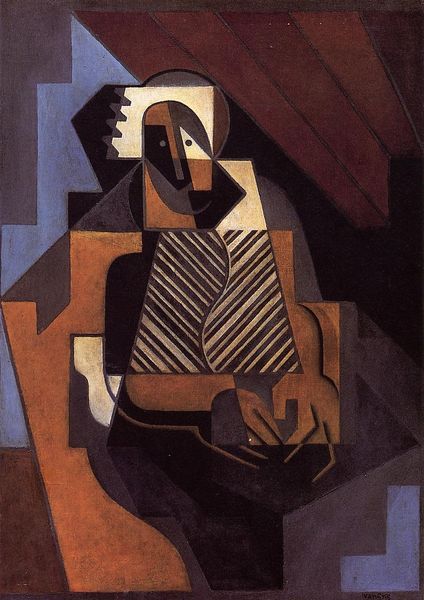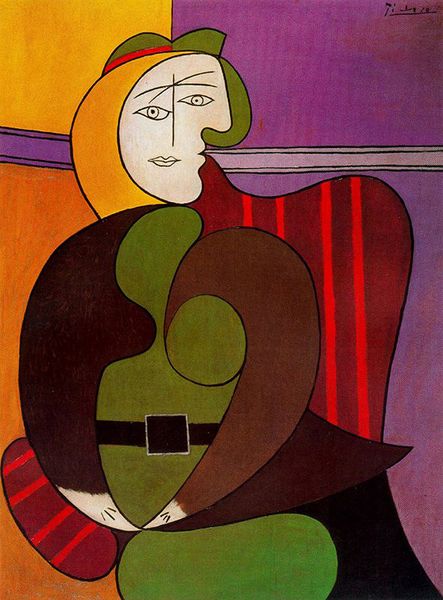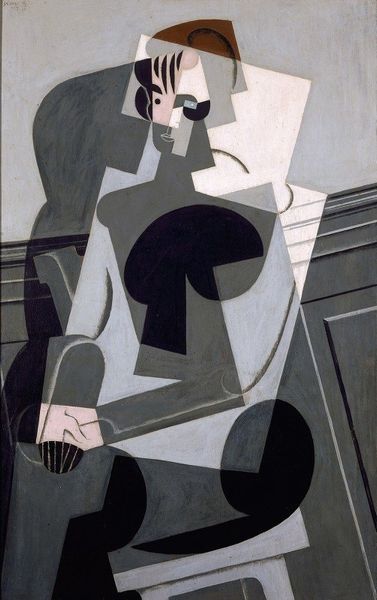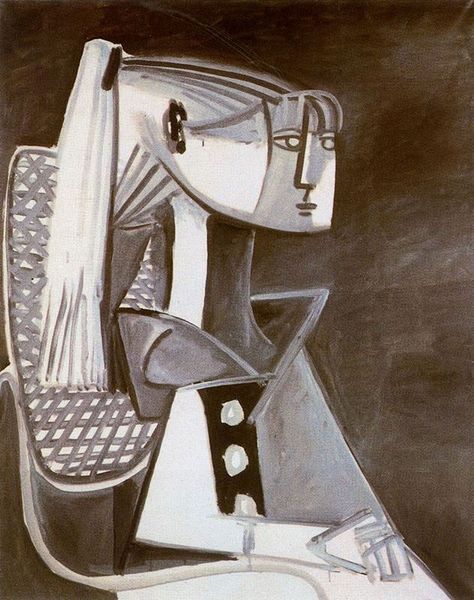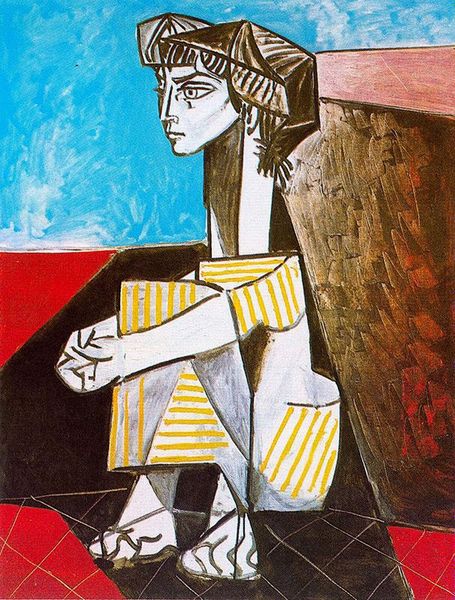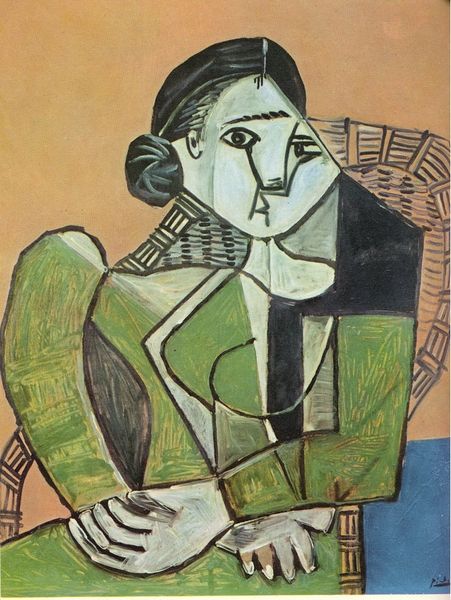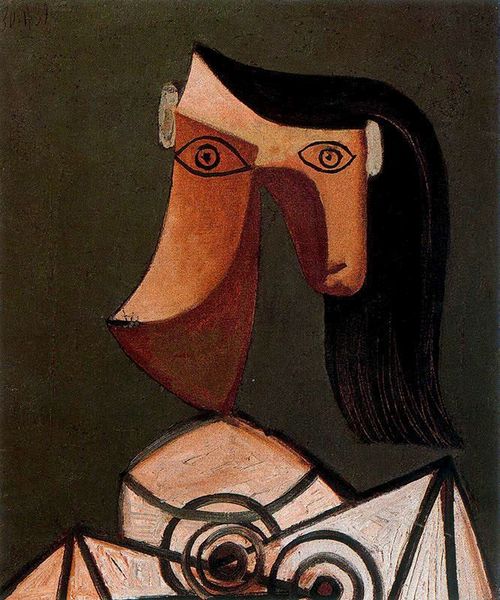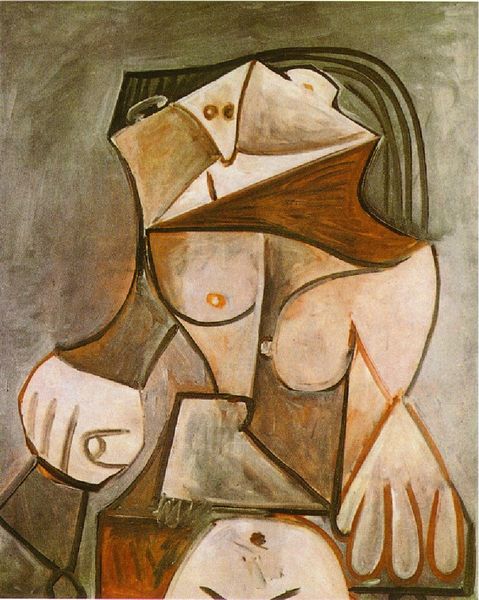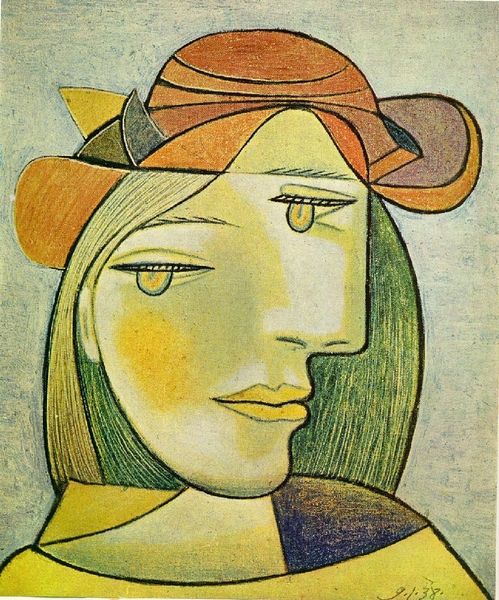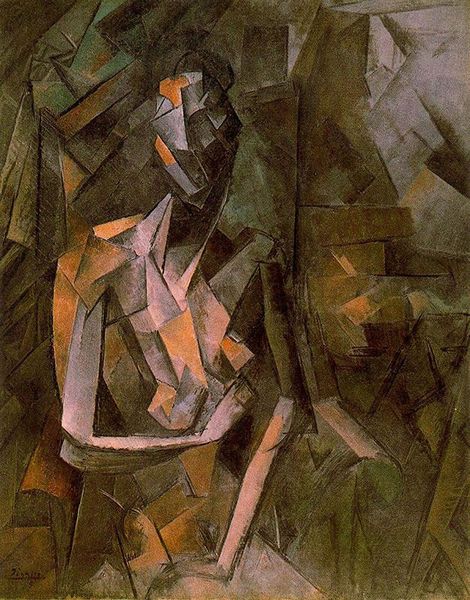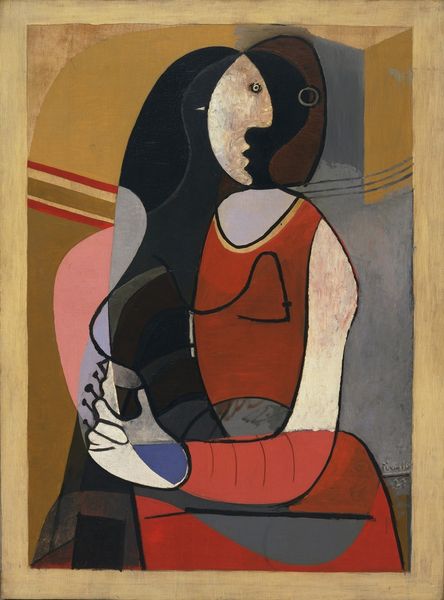
painting, oil-paint
#
portrait
#
cubism
#
painting
#
oil-paint
#
caricature
#
figuration
#
geometric
#
modernism
Copyright: Pablo Picasso,Fair Use
Curator: We are looking at a canvas by Pablo Picasso entitled "Buste of young woman (Marie-Therese Walter)," made with oil paint in 1926. Picasso here plays with the tradition of portraiture through his distinctive cubist approach. Art Historian: My first impression is somber. There's a stillness, almost a resignation in the way she's presented, even with the fractured perspective. The color palette definitely adds to that feeling. Curator: Yes, and limiting the palette seems key to Picasso's production here. The monochrome browns and grays highlight the sharp angles and lines, which could signify the process of fragmentation inherent to Cubism. By stripping back color, the artist directs our attention to the construction itself. Art Historian: The contrasting light and dark halves of her face immediately catch the eye. Perhaps this is a visual representation of inner conflict or duality within the subject's persona. After all, portraits are not just records but also symbolic representations of the self. Curator: Good point. This portrait belongs to a time of significant industrial and societal change. Could the geometric forms also mirror the increasingly mechanized and fragmented nature of modern life, reflecting back on human form? It shows the effect of modernity on painting. Art Historian: Perhaps. It reminds me of archaic sculptures that attempted to convey timeless ideas. Here the asymmetry almost makes it dreamlike, where clear boundaries of identity blur, opening a realm where perception is fluid, influenced by emotions, cultural biases, and memory. Curator: I think he makes the medium and construction an equal subject with the depiction of Marie-Therese, elevating the material handling in ways unique to the 20th century. I think it also challenged academic ways of producing fine art objects and put forward other valid methods. Art Historian: It's powerful to think how Picasso uses her image – an object of desire perhaps – to convey broader philosophical and psychological states of humanity and explore those shifts in artistic form at the same time. Curator: I agree; he certainly invites discourse on materiality within the canvas. It definitely provides an enriching lens. Art Historian: This certainly has me contemplating art's potential to hold meaning and inspire conversation across decades.
Comments
No comments
Be the first to comment and join the conversation on the ultimate creative platform.
